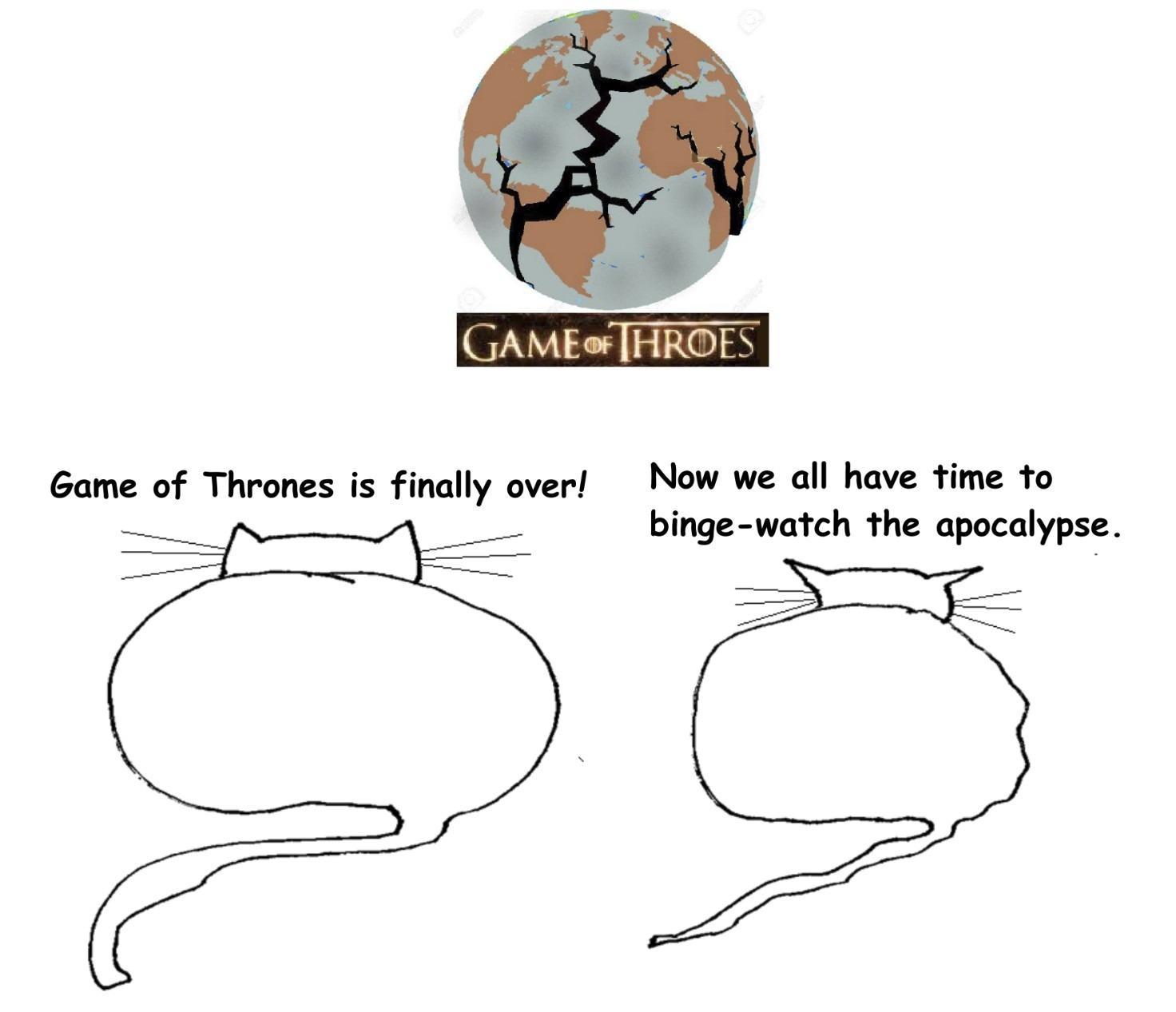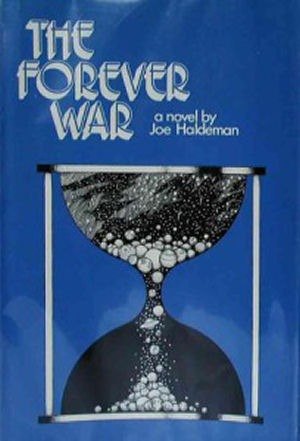
Denver, Colorado, in May of 2015.

Denver, Colorado, in May of 2015.
by Joseph Shieber

In the most recent case of a white person’s discomfort resulting in the ejection of African Americans from public spaces, a young, black couple who were picnicking with their dog at a KOA campground in Mississippi were threatened at gunpoint by a white campground manager and forced to leave.
This sort of case calls to mind one of the hottest topics in the the theory of knowledge at present (and one of the topics of the 22nd lecture of my “Theories of Knowledge”). It’s what philosophers call “moral encroachment” and involves the claim that the amount of evidence you need in order to have sufficient support for believing something depends in part on the moral implications of that belief.
All of this can seem really abstract. However, if you take it step-by-step, you can see that the ideas behind the notion of moral encroachment are pretty easy to grasp.
First, if we’re going to recognize the idea of moral encroachment, then that means recognizing that beliefs can have moral implications at all. And that can seem difficult to accept.
What it would mean to say that a belief has moral implications is this. It’s the idea that, over and above being able to weigh a belief as being supported or unsupported by the evidence, we can also evaluate at least certain beliefs based on their moral qualities.
This explanation helps to demonstrate where the term “moral encroachment” comes from. The idea is that moral considerations — the considerations arising from a belief’s moral qualities — can encroach on what we might call “epistemic” considerations — those having to do with whether a belief is supported or unsupported by the evidence.
Before we assess the evidence for the thesis of moral encroachment, though, it will help to see if it even makes sense to suggest that any beliefs can have moral implications at all. Read more »
by Michael Liss
“I worked night and day for twelve years to prevent the war, but I could not. The North was mad and blind, would not let us govern ourselves, and so the war came.” —Jefferson Davis, July 1864
 By the time Sherman’s armies had scorched and bow-tied their way to the sea, by the time Halleck had followed Grant’s orders to “eat out Virginia clean and clear as far as they go, so that crows flying over it for the balance of the season will have to carry their own provender with them,” and by the time Winfield Scott’s Anaconda Plan was finished squeezing every drop of life out of the Confederacy, there had to be those who wondered what possible logic would lead intelligent men like Jefferson Davis to make such a catastrophic choice.
By the time Sherman’s armies had scorched and bow-tied their way to the sea, by the time Halleck had followed Grant’s orders to “eat out Virginia clean and clear as far as they go, so that crows flying over it for the balance of the season will have to carry their own provender with them,” and by the time Winfield Scott’s Anaconda Plan was finished squeezing every drop of life out of the Confederacy, there had to be those who wondered what possible logic would lead intelligent men like Jefferson Davis to make such a catastrophic choice.
Yet, the South almost won the gamble. With secession, they had challenged the core of the American Experiment, the democratic principle of equal rights, general (male) suffrage, government by a majority, and a peaceful transition of power when that majority so indicated. They also posed an existential question for the North: Was adherence to a principle, even a cherished one like the Union, worth lives and property?
The Civil War is fascinating on so many levels, but what made it fundamentally different than any other conflict that preceded it was that, for the first time, two peoples with the ability to exercise electoral oversight engaged in a protracted armed conflict. This implied something new. The simplest mechanisms of civic beliefs: the right to disagree publicly, to organize, to place elected leadership on notice that their jobs could be at risk, would all play an unexpectedly crucial role in the manner in which the war began and was ultimately prosecuted. Read more »

almost without metaphor
clouds this morning cross two
adjacent mountains tinged with
bluegrey and pink, they move deliberately
in a swift west wind not like anything
but migrating water vapor
held by hydrogen bonds,
the cooler the better, they glide
over pine, hemlock, oak, and spruce
being networks of misted h-2-o.
the pine, hemlock, spruce, and oak
will drink to satiation if graced by clouds
meeting more frigid air and rain falls
not like anything but clear liquid
that has found itself in a bowl
of gravity
Jim Culleny
© 5/21/19
by Dave Maier
 Philosophers have spilled a great deal of ink attempting to nail down once and for all the necessary and sufficient conditions for a thing’s being a work of art. Many theories have been proposed, which can seem in retrospect to have been motivated by particular works or movements in the history of art: if you’re into Cézanne, you might think art is “significant form,” but if you’re impressed by Andy Warhol, you might that arthood is not inherent in a work’s perceptible attributes, but is instead something conferred upon it by members of the artworld.
Philosophers have spilled a great deal of ink attempting to nail down once and for all the necessary and sufficient conditions for a thing’s being a work of art. Many theories have been proposed, which can seem in retrospect to have been motivated by particular works or movements in the history of art: if you’re into Cézanne, you might think art is “significant form,” but if you’re impressed by Andy Warhol, you might that arthood is not inherent in a work’s perceptible attributes, but is instead something conferred upon it by members of the artworld.
Nothing has really seemed to fit everything, and for whatever reason, essentialism in the philosophy of art, or at least arguing about it in public anyway, has drifted in and out of fashion. Yet that question, or something like it, won’t simply go away. Unless everything is art, some things are art and some are not. What’s the difference?
When you get stuck like this, one way to get back on track is to ask a different question. There are plenty of worthwhile candidates, but one which keeps coming up for me is: what’s the difference between something that’s not art because it’s not good enough, and something that’s not art because it’s the wrong sort of thing? Let’s start there. Read more »
by Robert Fay

The great critic George Steiner in his book Tolstoy or Dostoevsky? (1959) believed the achievements of Russian literature in the 19th century stand as one of “three principal moments of triumph in the history of western literature, the other two being the Athenian dramatists and Plato and the age of Shakespeare.” Not particularly bad for a largely peasant-filled country whose entire literary tradition to that point was arguably in the form of just one man’s oeuvre: Alexander Pushkin. “His works,” Steiner notes, “constituted in themselves a body of tradition.”
But if the Russians didn’t have the bedrock cultural traditions of the their European neighbors—ancient Greek and Roman Civilizations, along with the unifying force of the Roman Catholic Church—they certainly had God, and God in Russia meant one thing: the Russian Orthodox Church.
In the 19th Century, the European intellectual and artistic environment was animated by the Enlightenment, whose denouement was surely the decapitation of France’s ancien régime in 1789, and with it, much of the legitimacy of “state, church and people” being understood as a unified, divinely-sanctioned manner of organizing human society and culture.
But by not being definitively western, either in geography or in the totality of its cultural inheritance, Russia had much in common with that one-time bastard of Europe, the United States of America, which in the 19th Century was still very much grappling with God as is evidenced by the works of Nathaniel Hawthorne and Herman Melville, among others. Read more »
by R. Passov
As the clouds of WWII darkened Austria, Kurt Gödel, the greatest  logician of modern times, at Einstein’s urging, brought his two magnificent proofs to Princeton. There he would remain for almost forty years, never mentoring a graduate student, rarely lecturing, adding only one substantial but incomplete proof to the cannon of math.
logician of modern times, at Einstein’s urging, brought his two magnificent proofs to Princeton. There he would remain for almost forty years, never mentoring a graduate student, rarely lecturing, adding only one substantial but incomplete proof to the cannon of math.
Mildly underwhelmed by the impact of his discoveries, at Princeton he would gradually set aside math in favor of philosophy. Little of this work was published in his lifetime. But it was enjoyed by Einstein who for the last decade of his life, walked alongside as Gödel discussed a field Einstein once likened to ‘writings in honey.’
________________________________________
Gödel was born in 1906, into a German speaking family living in Brunn (Brno) Moravia, then part of the Austria-Hungary Empire, soon to be annexed by Germany, now part of the Czeck Republic. His father before passing unexpectedly in 1929, had built a successful textile business that would secure his family’s finances.
An early childhood struggle with Rheumatic fever left Gödel forever suspicious of the state of his health. He took his primary education at the local Realgymnasium. Modeled after the enlightened German system, the gymnasium offered “mental gymnastics, developing both mind and body.” Following his older brother, in 1921 he entered the University of Vienna.
Easily establishing his gifts, he studied theoretical physics, enjoyed the life of a student and earned a reputation for sleeping late. Read more »
by Brooks Riley

by Leanne Ogasawara

1.
The year was 1683. And the Grand Vizier of the Ottoman Empire, Kara Mustafa Pasha, was leading one of the most organized war machines the world had ever seen, westward– toward Vienna. We know that his campaign would end in failure. The Pasha himself held ultimately responsible, he would be made to suffer the punishment of death by strangulation. The skin of his head peeled off and stuffed with straw, this gruesome “head” was then delivered to the Sultan back in Constantinople in a velvet bag.
Make sure you tie the knot right, he reportedly said with great bravado to his executioners as they prepared to tie the silken cord around his neck.
Only imagine how optimistic he must have been months earlier as he led his powerful army toward the city known to the Ottomans as the “Golden Apple.” Before the battle, Kara Mustafa had sent an official demand for surrender of the city. It was pure formality– as both sides knew this was to be a fight to the finish.
The Ottomans, for their part, had already set up camp and began digging.
Digging?
The walls of Vienna were famous back then. Built during the 13th century using ransom money from the high-profile kidnapping of King Richard the Lionhearted (who had made the mistake of getting captured near Vienna whilst traveling home from the Holy Land), these walls had proved an impossible challenge the last time the Ottomans had come to town, in 1529. That was under Suleiman the Magnificent. And it wasn’t just the walls that challenged the invading army; for surrounding the walls were massive fortifications –including projecting bastions, ravelins, and ramparts. The entire city was then further fortified by wide artificial slopes (the glacis). That is why the best chance the Ottomans had was to dig under the bastions and detonate explosives to bring the fortifications down. Read more »
by Akim Reinhardt
 In 1974, noted science fiction author Joe Haldeman published a novel called The Forever War, which won several awards and spawned sequels, a comic version, and even a board game. The Forever War tells the story of William Mandella, a young physics student drafted into a war that humans are waging against an alien race called the Taurans. The Taurans are thousands of light years away, and traveling there and back at light speed leads Mandella and other soldiers to experience time differently. During two years of battle, decades pass by on Earth. Consequently, the world Mandella returns to each time is increasingly different and foreign to him. He eventually finds his home planet’s culture unrecognizable; even English has changed to the point that he can no longer understand it.
In 1974, noted science fiction author Joe Haldeman published a novel called The Forever War, which won several awards and spawned sequels, a comic version, and even a board game. The Forever War tells the story of William Mandella, a young physics student drafted into a war that humans are waging against an alien race called the Taurans. The Taurans are thousands of light years away, and traveling there and back at light speed leads Mandella and other soldiers to experience time differently. During two years of battle, decades pass by on Earth. Consequently, the world Mandella returns to each time is increasingly different and foreign to him. He eventually finds his home planet’s culture unrecognizable; even English has changed to the point that he can no longer understand it.
Born in 1943, Joe Haldeman is a Vietnam War veteran. He was drafted in 1967, served two years as a combat engineer, and earned a Purple Heart. Many have speculated that the disaffection William Mandella experiences upon returning home from war reflects Haldeman’s own alienation after Vietnam. But there is another element of The Forever War that has recently proven timely 45 years after its initial publication: its title.
The Donald Trump administration appears to be ramping up for a possible war with Iran even as the ongoing wars in Iraq and Afghanistan enter their sixteenth year, and the United States maintains a more indirect but important role in wars in Somalia, Syria, Yemen, and Lybia. Indeed, just yesterday, Vice President Mike Pence informed members of the West Point Military Academy graduating class that “it is a virtual certainty that you will fight on a battlefield for America at some point in your life.” Read more »

Alpine meadow in the South Tyrol in May of 2019.
by Bill Murray

OUTBOUND
We’re off to meet a small live-aboard motorboat about three hours drive south of Ho Chi Minh City to cruise the Mekong Delta for a few days. The older gentleman driving has a deep, rich voice we don’t understand, speaks no English and we no Vietnamese besides pleasantries, the names of some food and a particular local beer, 333, not very challengingly pronounced baa baa baa, like the black sheep.
He’s a pro driver, no doubt about that, all turned out in a nice golf shirt and slacks, and he works our little sedan to the Saigon River then south out of town, and holds a steady course until the city falls away. He appropriates the left lane and proceeds with zealous caution, a campaign strategy he follows every bloody deliberate inch of the way.
Steady ahead. If he hurtles inadvertently to 60 kph, even on long, empty stretches, his face flushes and he brakes abruptly. Could he be working by the hour? If they say this trip should take three and a half hours, no way will he make it three hours and a quarter.
We first came to Saigon twenty-five years ago. Since then women have largely dispensed with the demure way they rode the back of cycles, both legs to one side. Back then many more women wore the traditional Ao Dai, the thin, body length robe. Perhaps that made it hard to sit any other way.
The river yields to a web of canals. Smart electronic overhead signs show the way through less kempt industrial outskirts. Now we roll along a divided six-lane highway, with extra outside lanes for every variety of two-wheeler, and this goes on for miles and undifferentiated miles. Read more »
Music has been extraordinarily important to me. I’ve listened to and been moved by a lot of it, of all kinds, polka, jazz, classical, rock, and who knows what else. And I’ve performed in various settings – dive bars, concert halls, the streets of New York, weddings, even a funeral or two. And, as I am a thinker, I’ve tried to understand how it works. To that end I published a book some years ago, Beethoven’s Anvil: Music in Mind and Culture.
This article is adapted from the opening chapter. These are some of the things I set out to understand. Did I succeed? Of course not, but who knows? I’d like to think that I’ve asked some fruitful questions.
Tears for Johnny
On May 21, 1992 Bette Midler was a guest on the “Tonight Show.” She had been on many times before; the show had, in fact, been important in launching her career, as it had been for many performers. But this appearance was special: the next-to-last show for Johnny Carson, the show’s longtime host and star. He had decided to retire from television and the shows that week in May were planned and publicized as a farewell to Johnny.
Carson, himself a skilled drummer, liked swing-era jazz and popular music. The band he maintained for “Tonight” was a fine swing band. Midler was at home in that repertoire and was able to cajole Carson into singing a duet with her on a song she knew to be one of his favorites, Jimmy van Heusen’s fine ballad “Here’s That Rainy Day.” Carson was certainly more proficient as a drummer than as a vocalist, but his difficulties on this performance were more emotional than technical. The strain on his face was that of a man holding back tears.
The duet starts at roughly 7:16.
Read more »
by Scott F. Aikin and Robert B. Talisse

We have noted previously that there are two different phenomena called “polarization.” The first, political polarization, refers to the ideological distance between opposing political parties. When it’s rampant, political rivals share no common ground, and thus cannot find a basis for cooperation. Political polarization certainly poses a problem for democracy. Yet belief polarization is perhaps even more troubling. It is the phenomenon by which interactions among likeminded people result in each adopting more radical versions of their views. In a slogan, interactions with likeminded others transform us into more extreme versions of ourselves.
Part of what makes belief polarization so disconcerting is its ubiquity. It has been extensively studied for more than 50 years, and found to be operative within groups of all kinds, formal and informal. Furthermore, belief polarization does not discriminate between different kinds of belief. Likeminded groups polarize regardless of whether they are discussing banal matters of fact, matters of personal taste, or questions about value. What’s more, the phenomenon operates regardless of the explicit point of the group’s discussion. Likeminded groups polarize when they are trying to decide an action that the group will take; and they polarize also when there is no specific decision to be reached. Finally, the phenomenon is prevalent regardless of group members’ nationality, race, gender, religion, economic status, and level of education.
Our widespread susceptibility to belief polarization raises the question of how it works. Two views immediately suggest themselves, the informational account and the comparison account. Read more »
“The stars are raining down upon me. I know this is not true,
but it is the truth.” —Michel Foucault
the stars are raining down on me
I know this is not true, but there are so many,
as many as every drop in a deluge,
as many as if the earth had been upended
and the sands of every beach of every sea
were falling into my hair— I know,
I know this is not true ….. but,
as if the multitude of all words ever spoken or written
had been heaved into the sky and were falling back
as they always are upon my head—
I know this is not true ….. but,
as if their vertical boomerang effect
were returning them to their source,
as if Logos were doing it again, beginning,
stuttering as it does with each year . day. minute. second
nano or otherwise, drenching me with every drop of time—
I know, …I know this is not true
but it is
.
Jim Culleny
5/17/18
by Anitra Pavlico

In Louise DeSalvo’s introduction to a 1991 edition of Virginia Woolf’s first novel, The Voyage Out, she describes Woolf’s childhood incest and how she incorporates it into the novel. DeSalvo also discusses an earlier incarnation of the novel, Melymbrosia, which is much more overt in its references to incest. The Voyage Out, on the other hand, can easily be read without guessing at any of its author’s tragic history. DeSalvo, a scholar who spent seven years assembling Melymbrosia from Woolf’s papers in the archives of the New York Public Library, points out that it would have been illegal for Woolf to render incestuous experiences in print.
DeSalvo discusses Woolf’s half-brothers, Gerald and George, and their disturbing misdeeds. They were the sons of Woolf’s mother Julia and her first husband Herbert Duckworth, who died when Julia was pregnant with Gerald. Woolf described only many years later how Gerald had manually fondled her “private parts” when he was seventeen and she was five. George’s actions are harder to pin down. It seems he was someone who wanted to push boundaries, veering into flirtation and overly physical displays of affection, but still wanted to come across as the lovable, amiable older brother. Viviane Forrester notes in her 2015 biography of Woolf that Virginia and her sister Vanessa ruthlessly denounced George for the rest of their lives, but Virginia kept to herself the details of Gerald’s assault until only three months before her death. Read more »

Camille Hoffman. Here We Land. 2019.
“The current migration crisis on the U.S.-Mexico border factors heavily into Camille Hoffman’s work. The artist created collages from leaked photos from the border with images of America’s lush natural landscape. These collages are part of the exhibition ‘Here We Land,’ on view at Wave Hill through July 14.”
Current show.
by Andrea Scrima
Andrea Scrima: Madeleine, you translate, write critical essays, and have been editing for Music & Literature for six years. Recently, all these areas of your expertise were called upon in a particularly rigorous way in preparation for a quietly sensational literary event: the publication of a mammoth portfolio of Swiss writer Peter Bichsel’s work in English translation. Can you tell us a bit about Bichsel, and what some of the difficulties were in producing this issue?
 Madeleine LaRue: It did turn out to be pretty mammoth! How about I tell you, by way of introduction, about the first time I met Bichsel in person. He’d come to read at the Literarisches Colloquium in Berlin, the center of the grand old West Berlin literary establishment. It was November, it was dark and cold, and when he emerged at the back of the room and started walking up toward the stage, wearing the same black leather vest he’s been wearing for the past forty years, I think we were all a little worried about him. He was eighty-two then, and he looked exhausted. It had been a while since he’d been on such an extensive reading tour outside of Switzerland. He got to the stage and settled into his chair. The moderator welcomed him and asked how it felt to be back in Berlin—a simple question, a nice, easy opener. Bichsel still seemed tired, but as he leaned back and said, very slowly, in his lilting Swiss accent, “Ja, ja, Berlin,” his eyes lit up and he launched into a story about his first time in the city, in the early 1960s, and how he got caught in the middle of a bar fight with some people! Who turned out to be Swiss! And they all got thrown out onto the street together, and he’ll never forget it! And ja, ja, Berlin—and from his very first word, we all became like delighted children at Grandfather’s feet, totally enraptured, utterly unwilling to go to bed until we’d heard just one more story, pleeeease? And he himself became younger, full of life, charming and hilarious and genuine and profound. Read more »
Madeleine LaRue: It did turn out to be pretty mammoth! How about I tell you, by way of introduction, about the first time I met Bichsel in person. He’d come to read at the Literarisches Colloquium in Berlin, the center of the grand old West Berlin literary establishment. It was November, it was dark and cold, and when he emerged at the back of the room and started walking up toward the stage, wearing the same black leather vest he’s been wearing for the past forty years, I think we were all a little worried about him. He was eighty-two then, and he looked exhausted. It had been a while since he’d been on such an extensive reading tour outside of Switzerland. He got to the stage and settled into his chair. The moderator welcomed him and asked how it felt to be back in Berlin—a simple question, a nice, easy opener. Bichsel still seemed tired, but as he leaned back and said, very slowly, in his lilting Swiss accent, “Ja, ja, Berlin,” his eyes lit up and he launched into a story about his first time in the city, in the early 1960s, and how he got caught in the middle of a bar fight with some people! Who turned out to be Swiss! And they all got thrown out onto the street together, and he’ll never forget it! And ja, ja, Berlin—and from his very first word, we all became like delighted children at Grandfather’s feet, totally enraptured, utterly unwilling to go to bed until we’d heard just one more story, pleeeease? And he himself became younger, full of life, charming and hilarious and genuine and profound. Read more »
 Having before you an iced mango
Having before you an iced mango
of a really good variety,
and in perfect condition,
slice off
the upper piece
as you would decapitate
an egg,
with this difference,
that the mango must
be sliced
as it rests
naturally on its side,
lengthwise, and not be set up on end as an egg.
Well, having sliced off this piece,
put it on one side of your plate
and proceed to scoop out the stone.
* * *
The driver used the word “thou”
which is
rudeness
when applied to a white man.
In the clearest, most fluent vernacular, Kim pointed out his error,
climbed on to the box seat, and, perfect understanding established,
drove for a couple of hours up and down, estimating, comparing and enjoying.
* * *
Note: The first piece is a “found poem” from a quote in The Raj at the Table by David Burton, the second one is from Kim by Rudyard Kipling.